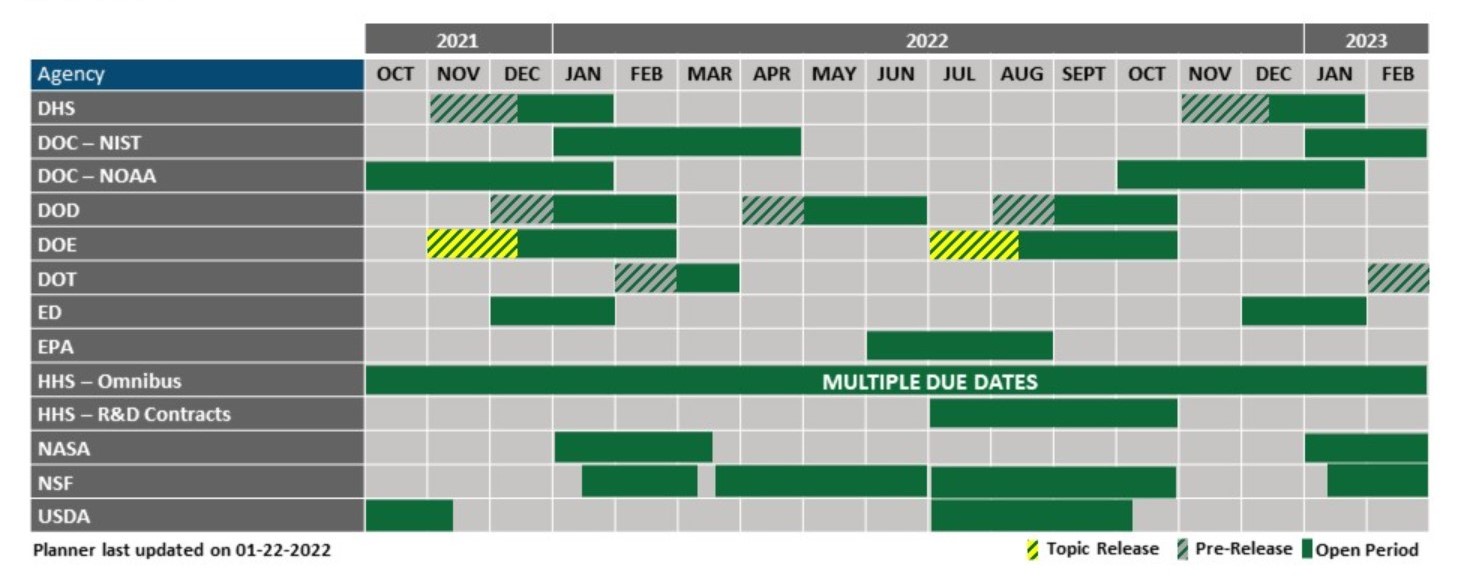Insight into Federal Programs | Federal Investment
April 21, 2022
August 30, 2022 | Annabelle Swift, Associate, CEBN
Small Business Innovation Research (SBIR) funding opportunities are offered by 11 different federal agencies. Six of these agencies also administer Small Business Technology Transfer (STTR) programs, which require small businesses to collaborate with a research institution. These grants offer equity-free funding for innovating and commercializing new technologies, and some state and local programs will even match federal SBIR funding.
There are key differences for entrepreneurs to understand in navigating when and how to apply for SBIR funding at across federal agencies. CEBN is here to offer some insight into navigating these funding opportunities.
See below for a complete list of which agencies participate in SBIR and STTR, and what each program offers. We encourage you to keep an open mind – there may be funding opportunities for your technology at agencies that you might not initially consider.
All programs offer Phase I grants of $100,000 and Phase II grants of $600,000 unless otherwise specified. Typically, only Phase I awardees are eligible for Phase II grants, but there are exceptions at some agencies.
This website has a continually updated list of open solicitations. SBIR.gov has also prepared this calendar to help you plan around when the agencies are expected to release solicitations throughout the year.

Given the 40-year track record of SBIR programs and their place in the innovation ecosystem, there are support organizations across the country for applicants and awardees. See below for a list of support organizations—please note that this is not a comprehensive list, and we encourage you to do further research.
Getting support for submitting a proposal:
Finding collaborators:
SBIR has a 40-year track record of success of leveraging small business innovation and is a crucial initiative to bolster clean energy innovation, national security, and economic growth more broadly. However, SBIR and STTR are set to expire on Oct. 1st. On September 20, 2022, the Senate passed the SBIR and STTR Extension Act of 2022 by unanimous consent, which extends the SBIR/STTR program for three years. We encourage you to sign onto CEBN’s coalition and business sign-on letter which calls on the House to swiftly pass this bill.
—
Learn more by exploring the other entries in our Insight into Federal Programs series, which features deep dives on existing programs that can help you build your business or organization. CEBN’s cleantech funding database includes even more opportunities.